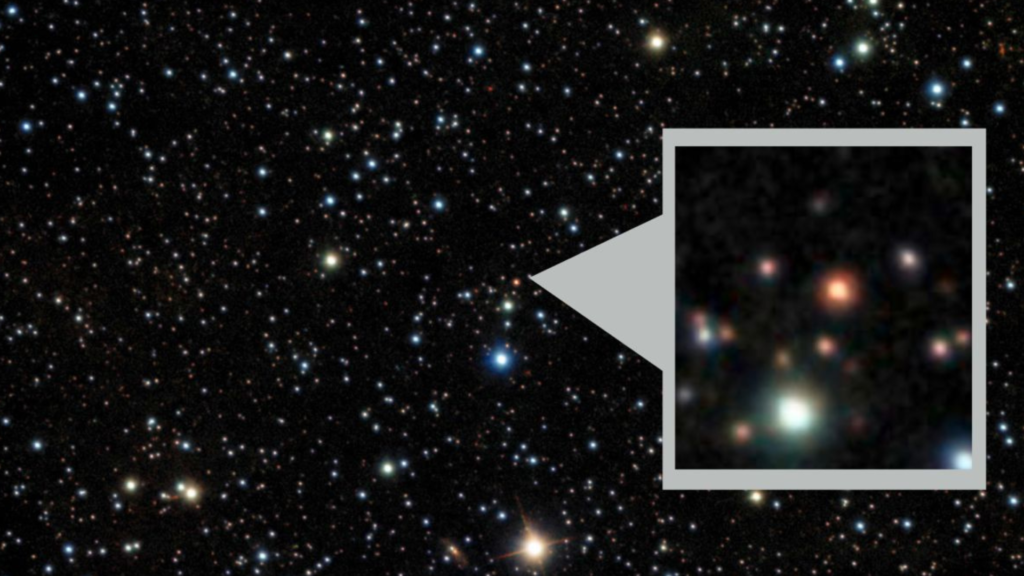Independent teams of astronomers have recently discovered the “BOAT,” or the brightest of all time: a cosmic explosion they say may possibly be the most powerful ever recorded. Scientists speculate the record-shattering gamma-ray burst was likely triggered by a massive supernova explosion that gave birth to a black hole roughly 2.4 billion light-years away from Earth, nearing the constellation Sagitta.
The event, dubbed GRB 221009A, was first discovered early Oct. 9 by multiple X-ray and gamma-ray space telescopes. Some telescopes that caught the burst include NASA’s Fermi-Gamma ray telescope and those found at the Neil Gehrels Swift Observatory. Upon the burst’s detection, independent teams of astronomers around the world quickly set out to obtain data on the “historic” blast. The first notable observation used the FLAMINGOS-2 imaging spectrograph, while the second used the Gemini Multi-Object Spectrograph.
An image of gamma-ray burst GRB 221009A. Credit: International Gemini Observatory.
“The exceptionally long GRB 221009A is the brightest [gamma-ray burst] ever recorded, and its afterglow is smashing all records at all wavelengths,” said Brendan O’Connor, a researcher with the University of Maryland and George Washington University via a NOIRLab release. He also led a team that detected the GRB. “Because this burst is so bright and also nearby, we think this is a once-in-a-century opportunity to address some of the most fundamental questions regarding these explosions, from the formation of black holes to tests of dark matter models.”
Because GRB 221009A is so bright, it may take months for it to become too faint to see with telescopes, meaning astronomers have ample time to study it. Amateur astronomers have even been getting in on the act of observing the GRB, but further study will soon have to take a hiatus, according to researcher Jillian Rastinejad.
“At the end of November, GRB 221009A is going to be so close to the sun that we just can’t see it with our telescopes anymore,” Rastinejad said. “So we’re gonna have this period between December and kind of the middle of February 2023 where we’re not going to really know what’s going on. That’s kind of a bummer.”
But before that day comes, O’Conner believes that astronomers will have enough time to discover the GRB’s mysterious origins by observing it through multiple wavelengths of light.
“The full dataset will require a detailed analysis and interpretation, but right now, we are just excited to be witnessing history in this once-in-a-century explosion.”

